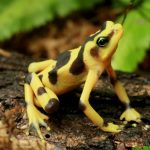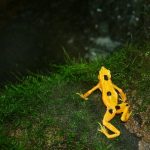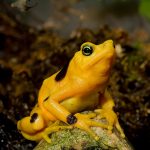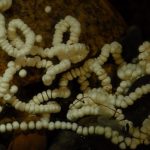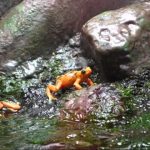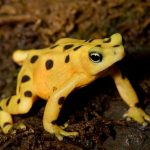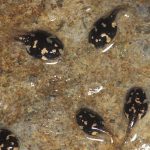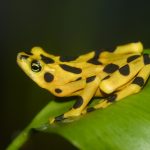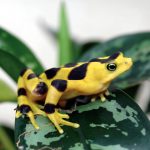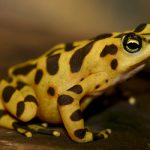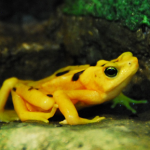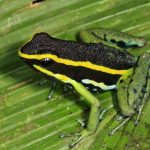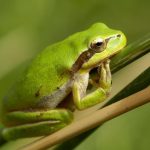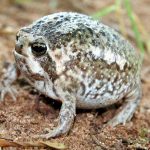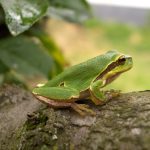Panamanian Golden Frog
Panamanian golden frog is a true toad belonging to the family Bufonidae, endemic to Panama. The species use a unique sign language method which takes the form of hand-waving and foot-raising known as semaphoring to communicate with each other. Males are extremely territorial. The species possess highly toxic compounds in their skin which it uses to deter predators. Females are larger than males.
| Kingdom | Animalia |
| Phylum | Chordata |
| Class | Amphibia |
| Order | Anura |
| Family | Bufonidae |
| Genus | Atelopus |
| Scientific Name | Atelopus zeteki |
| Other Names | Zetek’s golden frog |
| Size | Male: 1.4 and 1.9 in
Female: 1.8 to 2.5 in |
| Weight | Male: 3 to 12 g Female: 4 to 15 g |
| Color | Light yellow-green to bright gold with some individuals having black spots on the backs and legs |
| Distribution | Panama |
| Habitat | Near to mountain streams |
| Diet | Ants, flies, beetles, caterpillars, wasps, springtails, spiders |
| Predators | Birds, snakes, fish |
| Breeding Season | Between November and January |
| Mode of Reproduction | Oviparous (egg laying) |
| Clutch Size | Around 370 eggs |
| Incubation Period | 6 to 9 days |
| Metamorphosis Period | 6 to 7 months |
| Average Lifespan | Up to 9 years in captivity |
| IUCN Conservation Status | Critically Endangered |
Panamanian Golden Frog Pictures Gallery
- Atelopus Zeteki
- Baby Panamanian Golden Frog
- Golden Panamanian Frog
- Panamanian Golden Frog Eggs
- Panamanian Golden Frog Habitat
- Panamanian Golden Frog Images
- Panamanian Golden Frog Tadpole
- Panamanian Golden frog Waving
- Panamanian Golden Frog
- Panamanian Golden Frogs
- The Panamanian Golden Frog
- Zetek’s Golden Frog
